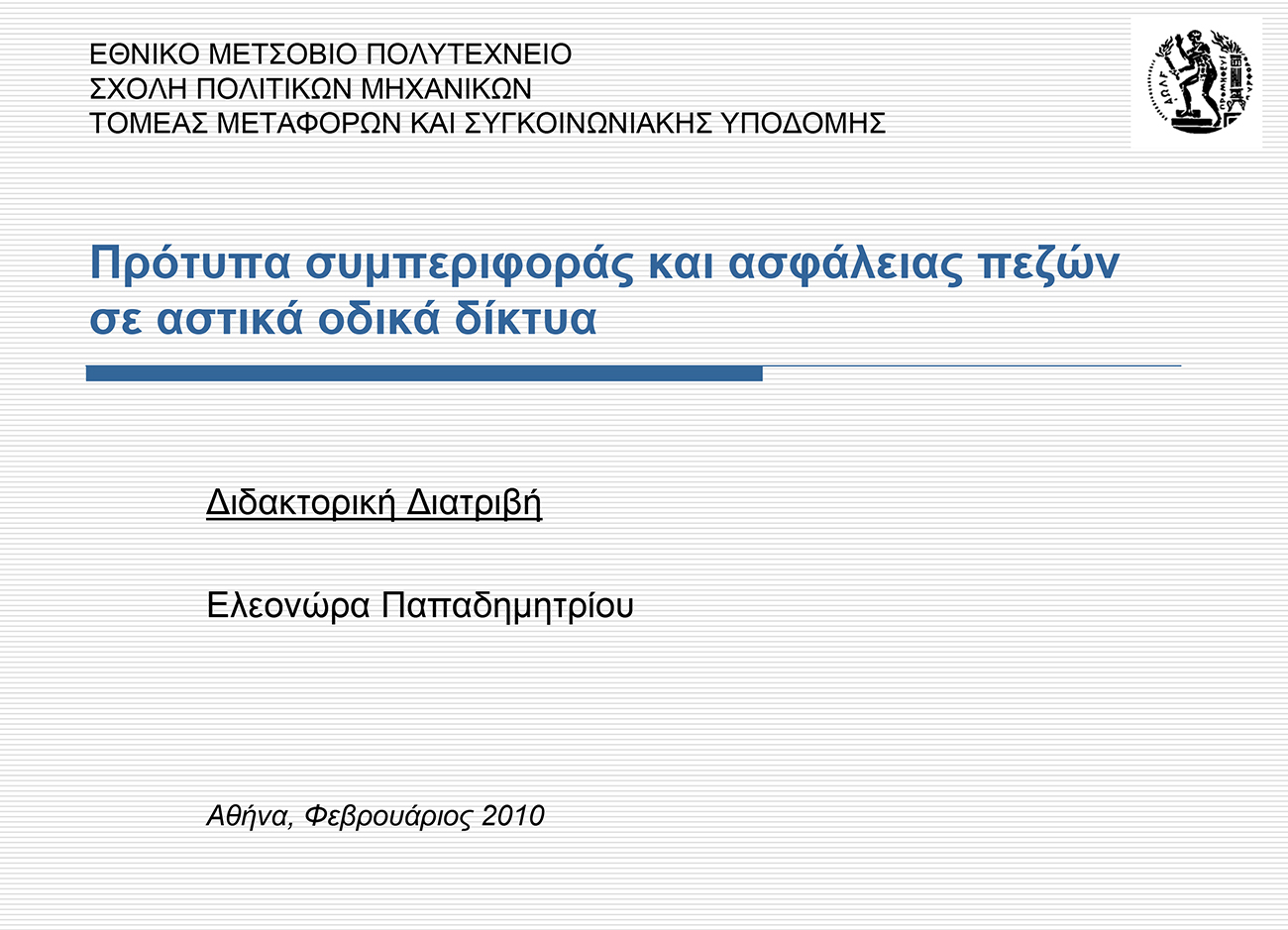
The objective of this Ph.D. Thesis is to develop models of pedestrian crossing behaviour along trips in urban areas and to estimate the related accident risk exposure of pedestrians. For this purpose, a topological consideration of the urban road network is opted for, allowing to identify basic properties of pedestrian trips and crossings. Furthermore, an algorithm is developed for the estimation of the choice sets related to crossing decisions along a trip and a discrete choice modeling approach is proposed for crossing choices. Different hypotheses are examined with respect to road crossing decision making process (sequential or hierarchical decision making) and various models are tested in each case (multinomial, nested, cross-nested or mixed models). Α field survey is then carried out, in order to collect data on actual pedestrian trips and crossings per road network, traffic conditions and pedestrian characteristics. The modelling results reveal increased probability of crossing at the beginning of the trip, a tendency to postpone crossings in longer trips with increased walking speed, increased probability of crossing at signalized junctions and increased probability of crossing at mid-block in low traffic volumes and on one-way roads. Moreover, the hypothesis of sequential decision making is proved to be more promising for the description of pedestrians’ crossing choices. For the estimation of pedestrian risk exposure along a trip a microscopic indicator is used, and the concept of risk exposure variability is defined in relation to the crossing probability. The proposed methodology is demonstrated by means of models implementation on a typical urban trip for different scenarios.
| ID | at1 |
| Full Text | |
| Tags |













